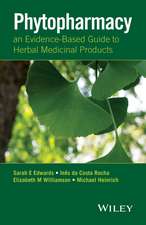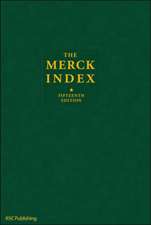Physical Methods for Inorganic Biochemistry: Biochemistry of the Elements, cartea 5
Autor John R. Wright, Wayne A. Hendrickson, Shigemasa Osaki, Gordon T. Jamesen Limba Engleză Paperback – 18 mar 2012
Din seria Biochemistry of the Elements
- 15%
 Preț: 647.08 lei
Preț: 647.08 lei - 5%
 Preț: 1620.56 lei
Preț: 1620.56 lei - 5%
 Preț: 1102.82 lei
Preț: 1102.82 lei - 18%
 Preț: 1222.94 lei
Preț: 1222.94 lei - 18%
 Preț: 946.72 lei
Preț: 946.72 lei - 15%
 Preț: 640.88 lei
Preț: 640.88 lei - 15%
 Preț: 642.83 lei
Preț: 642.83 lei - 15%
 Preț: 600.90 lei
Preț: 600.90 lei - 15%
 Preț: 646.75 lei
Preț: 646.75 lei - 15%
 Preț: 640.71 lei
Preț: 640.71 lei - 18%
 Preț: 1230.84 lei
Preț: 1230.84 lei - 15%
 Preț: 648.42 lei
Preț: 648.42 lei - 15%
 Preț: 649.71 lei
Preț: 649.71 lei - 5%
 Preț: 369.29 lei
Preț: 369.29 lei - 5%
 Preț: 720.47 lei
Preț: 720.47 lei
Preț: 373.68 lei
Preț vechi: 393.35 lei
-5% Nou
Puncte Express: 561
Preț estimativ în valută:
71.51€ • 74.38$ • 59.04£
71.51€ • 74.38$ • 59.04£
Carte tipărită la comandă
Livrare economică 14-28 aprilie
Preluare comenzi: 021 569.72.76
Specificații
ISBN-13: 9781468449990
ISBN-10: 1468449990
Pagini: 404
Ilustrații: 400 p.
Dimensiuni: 152 x 229 x 21 mm
Greutate: 0.54 kg
Ediția:Softcover reprint of the original 1st ed. 1986
Editura: Springer Us
Colecția Springer
Seria Biochemistry of the Elements
Locul publicării:New York, NY, United States
ISBN-10: 1468449990
Pagini: 404
Ilustrații: 400 p.
Dimensiuni: 152 x 229 x 21 mm
Greutate: 0.54 kg
Ediția:Softcover reprint of the original 1st ed. 1986
Editura: Springer Us
Colecția Springer
Seria Biochemistry of the Elements
Locul publicării:New York, NY, United States
Public țintă
ResearchCuprins
1. Introduction.- 1.1 Physical Methods.- 1.2 Probable Future Trends in Physical Instrumentation.- References.- 2. Nuclear Magnetic Resonance (Nmr).- 2.1 The Phenomenon.- 2.2 Multinuclear Nmr.- 2.3 Nmr Phenomena Related to Molecular Structure.- 2.4 Instrument Characteristics.- 2.5 Sample Manipulation (Two-Way Communication).- 2.6 Biological Considerations.- References.- Appendix A: Correlation Nmr.- Appendix B: Mathematical Symbols Used in Chapter 2.- 3. Nuclear Quadrupole Resonance (Nqr).- 3.1 Properties of Nqr.- 3.2 Relationship to Mössbauer, Esr, and Nmr Spectroscopy.- 3.3 Instrumentation.- 3.4 Applications.- References.- 4. Mössbauer Spectroscopy.- 4.1 Instrumentation.- 4.2 Conversion Electron Detection.- 4.3 Sample Considerations.- 4.4 Mössbauer Effect and the Chemical Environment.- 4.5 Biological Applications of 57Fe.- 4.6 Mössbauer Isotopes Other than 57Fe.- 4.7 Mössbauer Emission Spectra.- 4.8 Bragg Scattering Effects.- References.- 5. Electron Spin Resonance (Esr).- 5.1 Introduction.- 5.2 Theory.- 5.3 Esr Instrumentation.- 5.4 Applications.- References.- 6. X-ray Diffraction Methods for the Analysis of Metalloproteins.- 6.1 Introduction.- 6.2 Theoretical Basis.- 6.3 Experimental Procedures.- 6.4 Structural Analysis.- 6.5 Applications.- References.- 7. Electron Energy Levels: Electron Spectroscopy and Related Methods.- 7.1 Electron Spectroscopy for Chemical Analysis (ESCA) and Ultraviolet Photoelectron Spectroscopy (UPS).- 7.2 Auger (Secondary Electron) Spectroscopy.- References.- 8. Laser Applications: Resonance Raman (RR) Spectroscopy and Related Methods.- 8.1 Perspective.- 8.2 Resonance Raman (RR) Spectroscopy.- 8.3 Sample Considerations.- 8.4 Symmetry and the Intensity of Vibrational Absorptions.- 8.5 Vibrational Energy Levels.- 8.6 Applications.- 8.7Newer Methods Which Minimize Fluorescence Interference.- References.- 9. Circular Dichroism (CD) and Magnetic Circular Dichroism (MCD).- 9.1 The Relationship between ORD, CD, MORD, and MCD.- 9.2 Sample Considerations.- 9.3 Effects Observed in MCD Spectra.- 9.4 Biochemical Applications.- References.- 10. Kinetic Methods.- 10.1 Introduction.- 10.2 Methods.- 10.3 Applications.- References.- 11. Bioinorganic Topochemistry: Microprobe Methods of Analysis.- 11.1 Electron Probe Microanalysis.- 11.2 Ion, Laser, and Proton Microprobe Analysis of Elements.- References.- 12. Neutron Activation Analysis.- 12.1 Introduction.- 12.2 Applications and Examples of Neutron Activation.- References.







